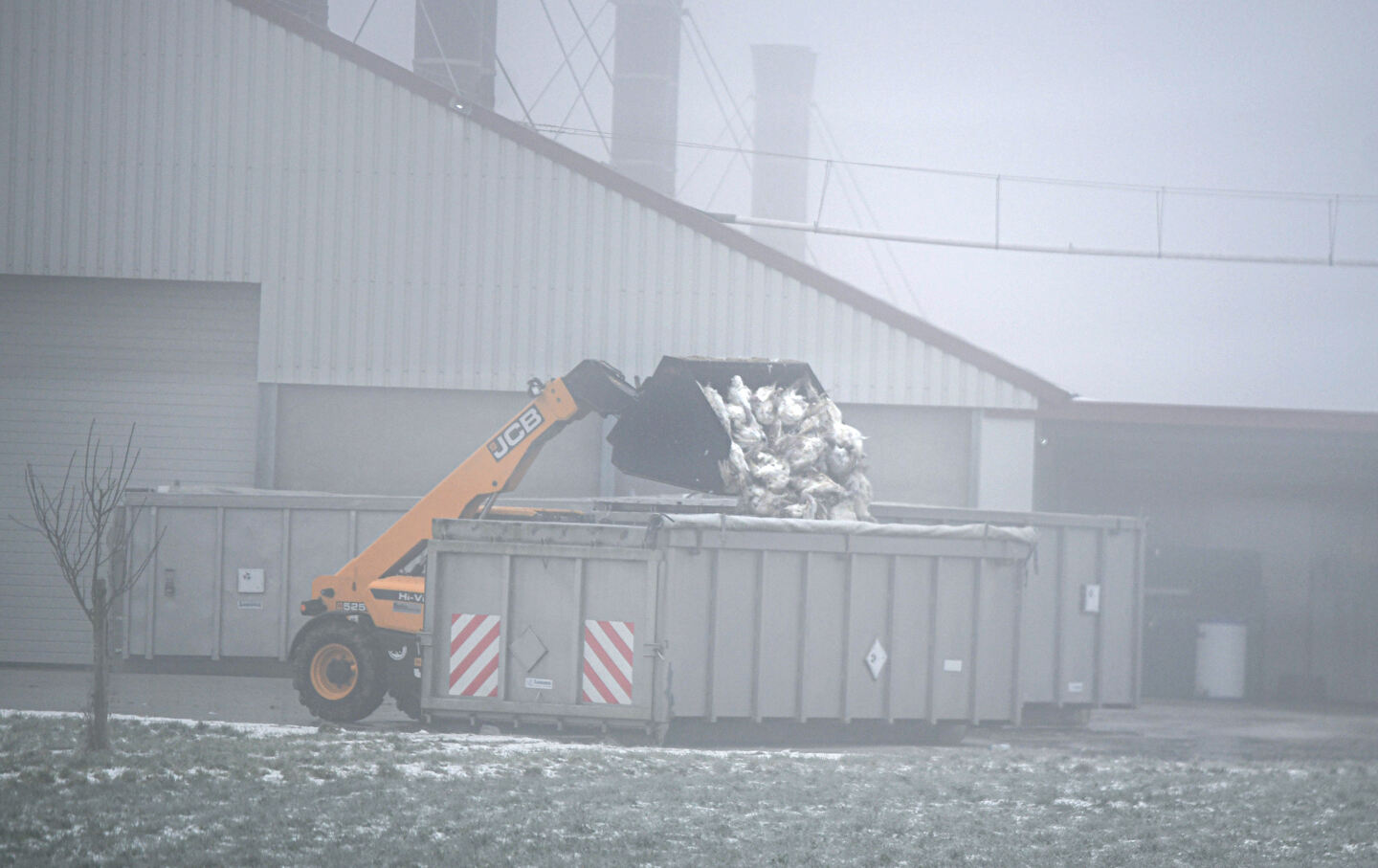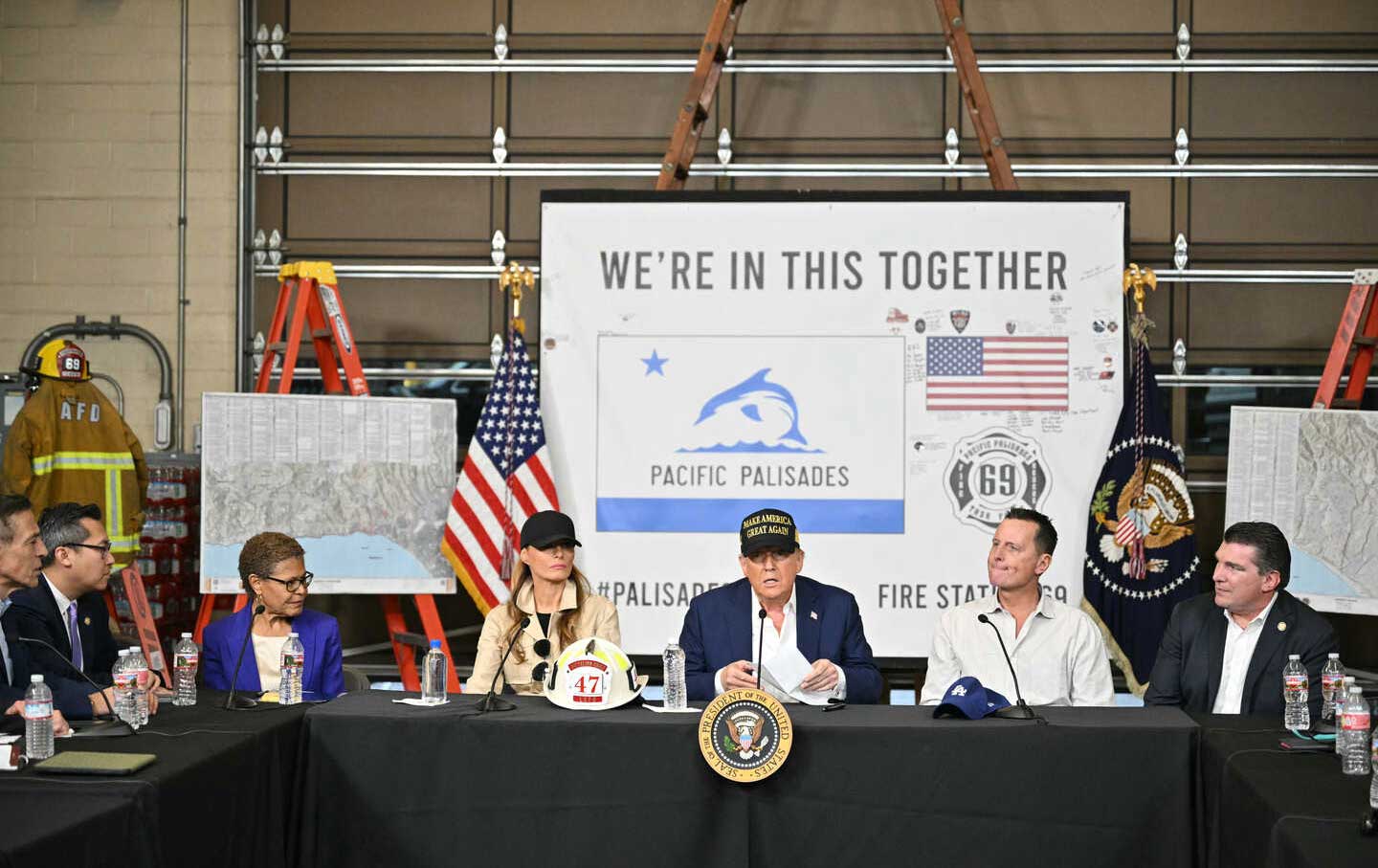
February 3, 2025
More likely, things will unravel quickly, with war on the horizon.
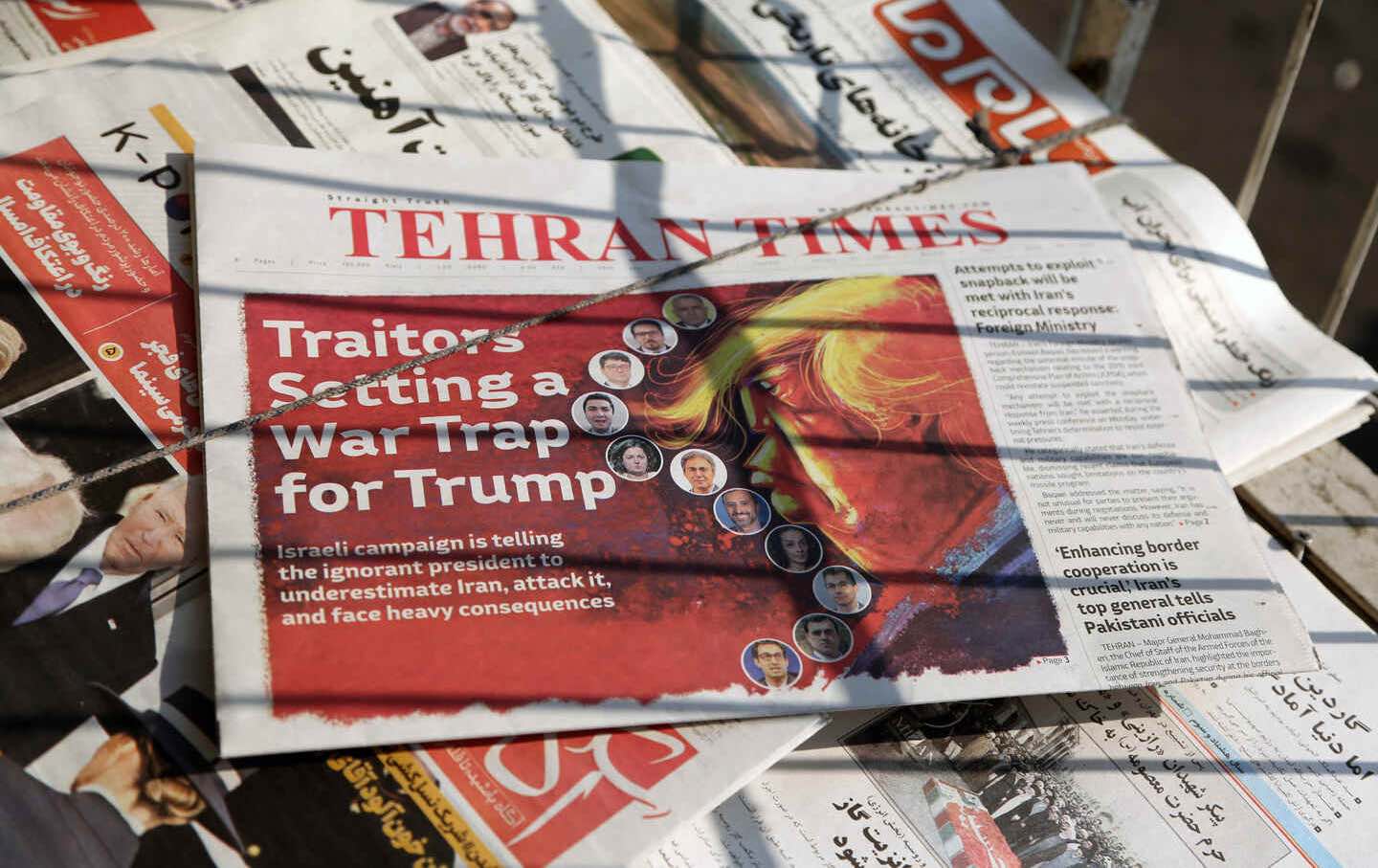
In 2025, President Trump will unavoidably be forced to confront a multilayered crisis in US-Iran relations. Around himself he’s assembled a foreign policy team of cabinet members, second-tier officials, ambassadors, and freelance envoys that includes hawks, America First–style doves, and know-nothings, though virtually every expert Iran-watcher believes that Trump will be the ultimate decision-maker. The president himself has signaled in several interviews and remarks that he’d like to make a deal with Iran. “We have to make a deal, because the consequences are impossible,” he said at a September press conference in New York. “We have to make a deal.” But so far, neither he nor his aides have said anything about the framework that a deal might involve, and Iranian officials have said that they’ve had no contacts with the new administration. Overall, based on his track record from 2017 to 2021, it’s safe to say that things will probably not go smoothly. “Anything can happen,” Trump said, cryptically, to Time magazine for his 2024 Person of the Year cover. “It’s a very volatile situation.”
Last time around, the self-described dealmaker created a crisis with Iran out of whole cloth. Trump let loose a series of wrecking balls aimed at Iran: He blew up the six-nation agreement on Iran’s nuclear program that had been negotiated by President Obama, imposed a system of “maximum pressure” sanctions that cut off virtually all of Iran’s oil exports, assassinated Iran’s top military leader, Gen. Qassem Soleimani, and warned that if Tehran retaliated, “the United States will hit 52 Iranian sites, some at a very high level and important to Iran and the Iranian culture, very fast and very hard.” Then, last September, after reports of Iranian assassination plots against US officials, Trump said that if anything like that should occur, “we are going to blow your largest cities and the country itself to smithereens.”
After withdrawing in 2018 from the Joint Comprehensive Plan of Action (JCPOA), the accord reached with Iran three years earlier, Trump declared then, too, that he wanted “a better deal.” Instead, he upped the pressure on Iran, in an failed attempt to force Tehran to capitulate to Secretary of State Mike Pompeo’s 12 demands, ultimatums so over the top that no Iranian government could even consider them. Whatever his intentions now, it’s exceedingly unlikely that he will be willing to offer enough carrots to Iran—including eliminating some or all of the sanctions that have devasted Iran’s economy—to get Iran to come back to something like the JCPOA, especially in light of what would be a firestorm of opposition from Republicans in Congress, the Israel lobby in Washington, and Israel itself.
In addition, the talks that created the JCPOA unfolded over many, many months before their successful conclusion. And Iran’s continuing advances in its nuclear enrichment program will create a crescendo of pressure as the year unfolds. To create a new arrangement would require strategic patience, painstaking attention to detail, and a willingness to account for Iran’s own requirements and national security interests—all qualities that Trump, erratic and unpredictable, does not have.
“I’m not an optimist,” Joost Hiltermann, the Middle East and North Africa director for the International Crisis Group, told me. “It’s looking more and more like there won’t be a deal.” And Jim Walsh of the Massachusetts Institute of Technology’s Security Studies Program, a longtime analyst who is one of the few Americans in the field who’s actually visited Iran, went further. Advocates of better relations between the United States and Iran who believe that Trump will choose diplomacy over confrontation with Iran are engaging in “wishful thinking,” he told me.
Still, despite Trump’s history with Iran and despite the team of hawks he’s assembled, it’s not impossible that Trump, whose self-regard knows no bounds and who’d love to win the Nobel Peace Prize, might override both Israel and the hawks at home in search of an accord. At least one person who’s not ruling it out is John Limbert, who was one of 53 Americans held hostage for 15 months after Iranian revolutionaries seized the US embassy in Tehran in 1979. “Donald Trump has an enormous vanity and ego, and I think that he would love to make a grand gesture, to claim credit for resolving the problems with Iran,” Limbert told me.
So, as Trump says: Anything can happen. But taking into account Trump’s penchant for bombast and his utter lack of understanding about the region, and Iran in particular—“I’m sure he never actually read the JCPOA,” says Limbert—plus the long-standing ill will between Washington and Tehran, fueled by Israel and its American friends and the ticking clock embodied in Iran’s nuclear program, a showdown between the two countries is most likely. And while it could start with another round of “maximum pressure” and nasty rhetoric, an ominous escalation pattern seems preloaded.
A Different Iran
If Trump believes that the Iran he dealt with in 2018 is what he’ll be dealing with now, he’s in for a surprise. The Iran of 2025 is a very different one from the seven years ago. Since then Iran has expanded and accelerated its nuclear research and uranium enrichment program, amassing a stockpile of near-weapons grade uranium and moving Iran closer to being what experts call a nuclear “threshold” nation. Iran has also spent the past seven years systematically intensifying its ties to China, which buys 90 percent of Iran’s oil exports. Iran has moved closer to Russia, too, with whom it recently signed what Tehran calls a “strategic partnership” that includes both a military dimension and strengthens the two countries’ economic and financial links.
In addition, Iran has brokered a détente with its arch-rival across the Persian Gulf, Saudi Arabia, thanks to the help of Chinese diplomats who brought the two countries together. In the past, the Saudi regime was a determined opponent of Iran and sought to block the JCPOA. But now the Saudis—despite being close friends of Trump and lucrative business partners of the Trump Organization and his son-in-law Jared Kushner—will not join the United States in a confrontation with Tehran.
For Iran’s part, since Trump’s reelection the Iranians are sending out signals in every direction that, despite their past encounter with Trump, they’re ready to talk. In an article by Foreign Minister Mohammad Javad Zarif in Foreign Affairs, in President Masoud Pezeshkian’s NBC interview, in a speech by Zarif at the World Economic Forum in Davos, in a lengthy piece by Pezeshkian in the Tehran Times, and elsewhere, Iran’s top officials have said over and over again that they seek negotiations.
But, not surprisingly, they’re wary. Zarif, a longtime Iranian diplomat who helped put together the 2015 accord, told the Davos gathering that he hopes that Trump will adopt “rationality,” adding, “I hope that this time around, a ‘Trump 2’ will be more serious, more focused, more realistic.” Pezeshkian, a reformist elected last summer in a surprise victory over a radical-right candidate who opposed talking to the United States, warned NBC: “We have this doubt that, no matter how much we engage in conversation and dialogue, they are trying to topple the government, not solve the problems.”
Popular
“swipe left below to view more authors”Swipe →
“Trump will actually seek both dialogue and agreement with Iran and his ‘maximum pressure’ policy against the Islamic Republic. But the agreement he wants is very different from the agreement we want,” wrote a leading Tehran newspaper. “We want an agreement within the framework of the JCPOA.… But the Trump team wants a comprehensive agreement that all issues such as the nuclear program, our missile capability, our position on the Zionist regime and regional policies, as well as human rights be included in that. Therefore, it is conceivable that Trump will seek to apply maximum pressure again.”
Limbert says that Pezeshkian’s support for negotiations clearly has the support of Iranian Supreme Leader Ayatollah Ali Khamenei. “We talk about the Islamic Republic as being ideological, but when their survival is at stake they get very pragmatic.”
Trump’s Hawks
In the United States, both hawks and hard-liners, on one hand, and doves and realist-minded supporters of restraint, on the other, know that Iran has recently faced a brutal series of setbacks that, arguably, weaken its position.
To its west, Iran is reeling from the loss of its chief ally in Damascus, where President Bashar al-Assad was toppled by rebels, and in Lebanon, where the Shiite-dominated Hezbollah, a key part of Iran’s Axis of Resistance, was decapitated and tremendously weakened during its ill-considered war with Israel following the October 7, 2023, invasion of Israel by Hamas. Militarily, Iran itself felt the impact of two Israeli attacks that greatly damaged its air defense system, making it more vulnerable to attack by bombers and missiles. And internally, Iran is suffering from an agonizing economic crisis, including a drastic shortage of “gas, electricity, energy, water [and] money,” according to Pezeshkian, that has forced the country to shutter industrial plants and other facilities. Iranian officials fear that economic collapse could set off widespread political unrest, in the wake of the 2022 Woman, Life, Freedom revolt in support of women’s right against the so-called “morality police.”
For doves, Iran’s difficulties mean that diplomacy, with an offer to lift economic sanctions, is that much more likely to succeed. But for hawks, Iran’s predicament signals that it’s time to attack the country, while its defenses are weak. At least one leading Trump official, the president’s incoming envoy on the Ukraine-Russia war, Keith Kellogg, has explicitly said that the United States will seek to take advantage of Iran’s current vulnerability. Speaking on January 11 to a gathering of the National Council of Resistance of Iran, a cult-like terrorist group otherwise known as the Mujahedin-e Khalq, Kellogg outlined a plan for regime change in Tehran. “A policy of maximum pressure must be reinstated,” said General Kellogg, adding that such pressure must not be limited to economic sanctions but include “kinetic, military force.”
And while Trump hasn’t included neocons such as Pompeo and John Bolton, the latter a fierce Trump critic, in his administration—and while he bluntly told über-hawk Brian Hook, his Iran envoy during his first administration, “You’re fired!—he’s added hawks such as Secretary of State Marco Rubio, national security adviser Mike Waltz, and Defense Secretary Pete Hegseth to his team. His ambassador to Israel, Mike Huckabee, and his ambassador to the United Nations, former representative Elise Stefanik, are both militant supporters of Israel’s far right. In October, Rubio wrote on X, “Only threatening the survival of the regime through maximum pressure and direct and disproportionate measures has a chance to influence and alter [Iran’s] criminal activities.” And Hegseth, who’s called for bombing Iran’s nuclear installations—and even its cultural sites—met in late January with Israeli Defense Minister Israel Katz, who in his meeting “hinted at potential action against Iran in the ‘upcoming months,’” reported The Jerusalem Post.
And despite declaring that he’s not opposed to an accord, his comments are often ambiguous at best. In late January, when he was asked if he’d support an Israeli strike against Iran’s nuclear facilities, he replied, “I’m not going to answer that,” adding: “Hopefully that can be worked out without having to worry about it. It would really be nice if that could be worked out without having to go that further step.”
A Ticking Clock
Meanwhile, there’s a looming deadline for striking at least a preliminary deal with Iran. In October 2025, the UN resolution that created the JCPOA 10 years ago expires, and with it the ability of any signatory to call for what’s called a “snapback” of UN-imposed sanctions on Iran. The United States, having left the accord in 2018, can’t invoke the snapback provision—but Britain, France, and Germany can. And if no US-Iran agreement is reached soon, and if Iran continues to accelerate its uranium enrichment program, the Europeans are likely to invoke that provision.
“The snapback is a very important deadline,” said Sina Toossi, a fellow at the Center for International Policy. “It would make a diplomatic solution infinitely harder.” It would be seen as intolerable “shock therapy” by Iran, he told me. And, he said, unless some sort of accord is reached by early summer, relations with Iran could be headed for confrontation before October.
Layering additional UN sanctions, on top of the US-imposed sanctions regime, would intensify Iran’s economic isolation. It would also trigger retaliation by Iran, which has indicated that it would drop out of the Treaty on Non-Proliferation of Nuclear Weapons, cut off inspections of its program by the International Atomic Energy Agency—and, possibly, move toward weaponization of its program. Such a scenario would be catastrophic, almost guaranteed to provoke a military attack by Israel, the United States, or both.
Since Trump’s reelection, Iran has had a series of diplomatic encounters with Iranian officials from Britain, France, and Germany. “The last three rounds under Pezeshkian have been with a much more professional team, including technocrats,” Ellie Geranmayeh, deputy head of the Middle East and North Africa program at the European Council on Foreign Relations, told me. But, like Toossi, Geranmayeh says, “Unless there is progress by early summer, the Europeans will be free to consider snapback.” Asked whether the Europeans might challenge the US president if he moves toward confrontation with Iran, she says: “Absolutely not.”
Hovering over everything, of course, is the unthinkable prospect of the US-Iran crisis turning into war. And Trump hasn’t shied away from advocating an attack on Iran’s nuclear program. In October, when President Biden warned Israel not to hit Iran’s nuclear facilities during that month’s Israel-Iran direct attacks, Trump said that “the answer should have been, ‘hit the nuclear first and worry about the rest later.’”
“Certainly, the risk of a military strike has never been higher,” Kelsey Davenport, director of nonproliferation policy at the Arms Control Association, told me. “And the Israelis will push the United States to go in that direction.”
Doreen Horschig, a fellow at the Project on Nuclear Issues at the Center for Strategic and International Studies, has written that bombing Iran’s nuclear facilities is a “bad idea,” since it can’t completely destroy the program, would accelerate its pursuit of a nuclear weapon, and drive its program underground. But, she told me, the United States and Israel might consider a “demonstration strike as part of a maximum pressure campaign, to send a signal and to see what Iran’s response might be.”
An attack on Iran’s nuclear installations, even a limited one, will have the opposite effect of the one intended, says MIT’s Walsh. “If you attack the nuclear facilities, once you bomb them, it’ll become very hard for Iran to resist the urge to say ‘fuck you’ and go ahead and build a bomb,” he told me.
In the end, the idea that Donald Trump is a peacemaker stretches credulity. His promise to end the war in Ukraine on day one evaporated. His out-Bidening President Biden in support for Israeli expansionism in Gaza, the West Bank, and Lebanon threatens to undo fragile ceasefires there. And his saber-rattling over Greenland and the Panama Canal is reviving talk of American imperialism. So the idea that the same Donald Trump who spent four years battering Iran could put forward a proposal that meets Iran halfway seems, well, ludicrous.
More from The Nation

The President’s Emergency Program for AIDS Relief is in danger of being shuttered. The decision could kill hundreds of thousands of people and kickstart an epidemic.
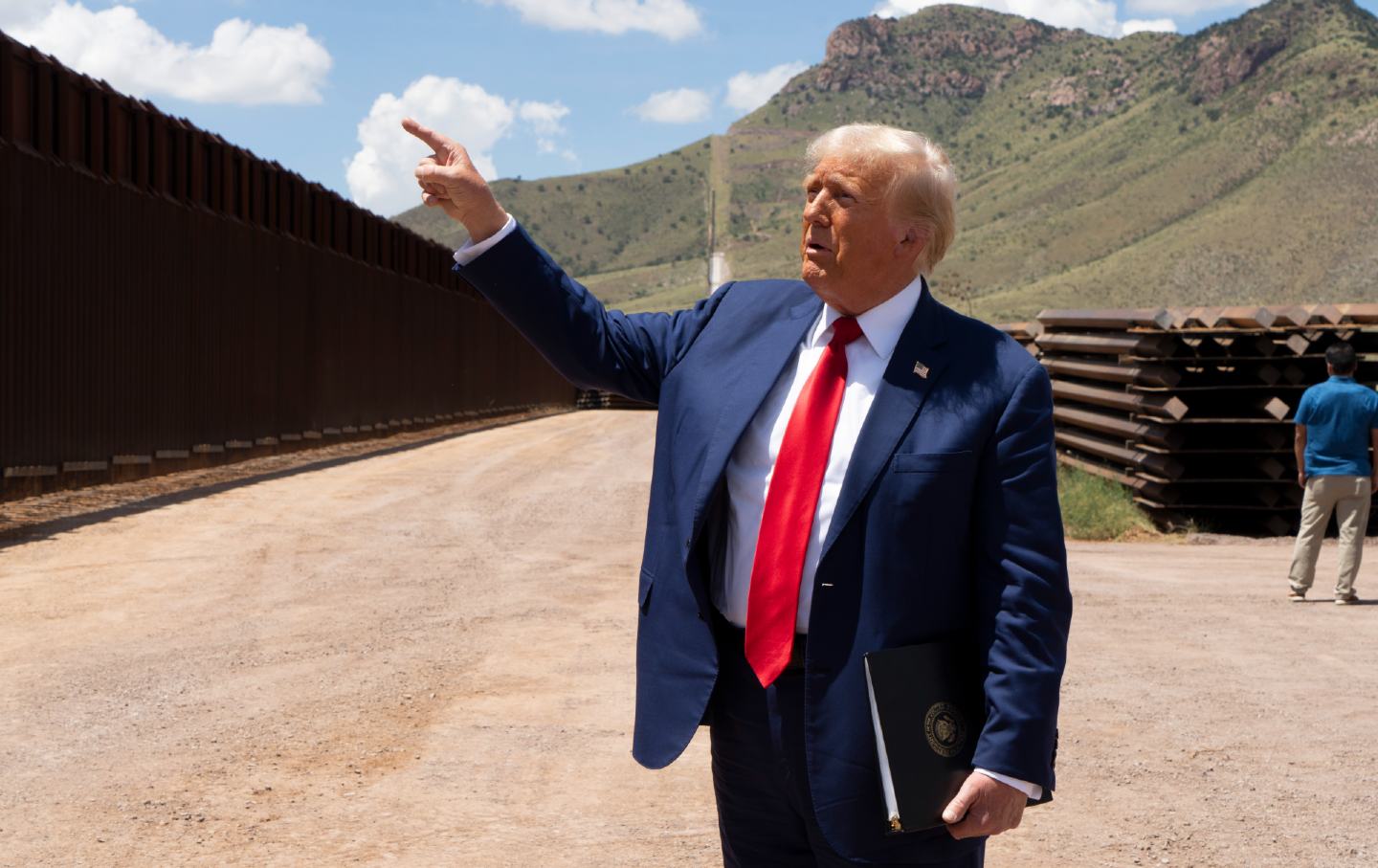
Despite other foreign-policy disagreements, a consensus is emerging among Republicans: The US must take an ultra-hawkish approach to Latin America.
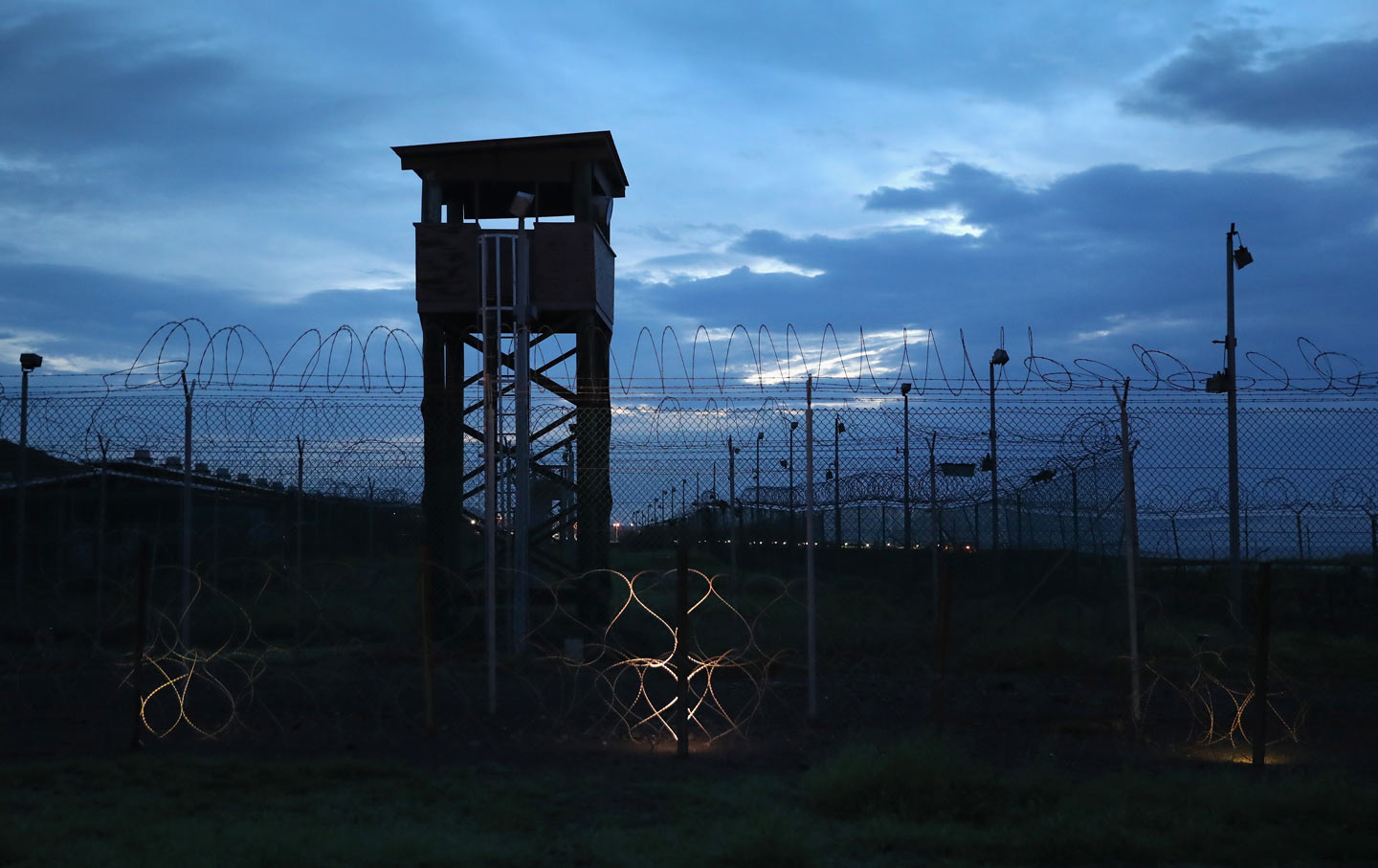
More than 23 years after the 9/11 attacks, here we are in the very same place we’ve been for endless years—on pause.


